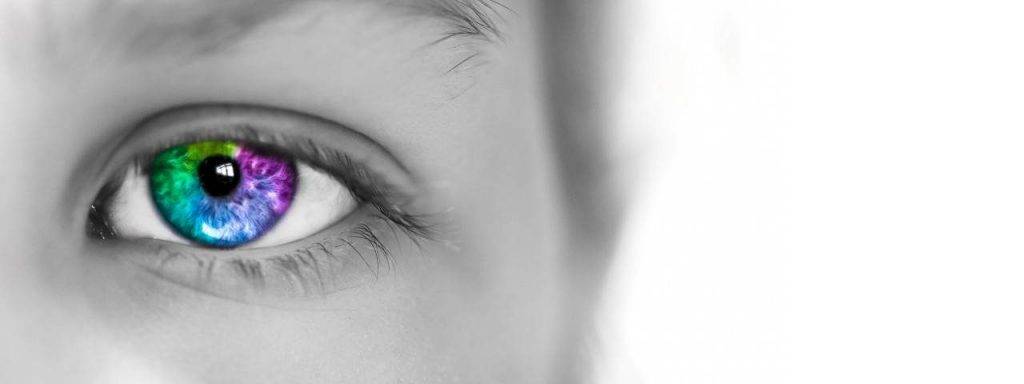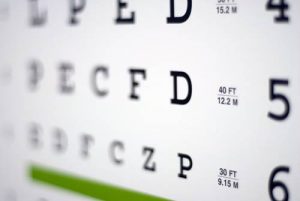Studies show colored lenses or filters are not substitutes for vision therapy.
It’s critical to address a child’s learning difficulties as soon as possible so that your child can achieve the best possible results and realize their maximum academic potential.
Vision therapy is an individualized treatment program that consists of a series of eye exercises that strengthen the eye-brain connection. The therapy improves visual abilities, enhancing general learning and school performance.
Vision problems and learning difficulties
Many children experiencing trouble learning or reading have an undiagnosed vision condition or reduced visual skills.
Visual skills allow a child to accurately read, remember words, comprehend what is written and process information.
Without well developed visual skills, a young student may mix up letters like b and d, or words like ‘was’ and ‘saw.’ Whereas older students may fall behind the reading level of the class or struggle with attention issues.
If your child is having any difficulties with their school work, make an appointment with an eye doctor to have their vision and visual skills evaluated.
SEE RELATED: The Do’s and Don’ts of Vision Therapy
Published research on colored lenses
Below are some studies that have proven that colored lenses and filters cannot replace vision therapy or improve a child’s ability to learn.
- Irlen colored overlays did not alleviate reading difficulties (Oct 2011)
https://pediatrics.aappublications.org/content/128/4/e932.long
Authors: Stuart J. Ritchie, Sergio Della Sala and Robert D. McIntosh
An Irlen diagnostician evaluated 61 schoolchildren (aged 7–12 years) with reading difficulties. The researcher employed an experimental design to look at changes in reading rate between three groups using: a prescribed Irlen color overlay, a non-Irlen color overlay, and no overlay.
Conclusion: The reading-rate test measure found no evidence of an immediate benefit of Irlen colored overlays. According to the research, Irlen colored overlays had no immediate effect on reading in children with reading difficulties.
A fourth group was also employed to examine the effects of Irlen colored overlays on a global reading score in a subset of 44 children who all had an Irlen syndrome diagnosis. In 77% of the poor readers, the Irlen diagnostician identified Irlen syndrome.
Conclusion: Measurement of the global reading score found no improvement with Irlen colored overlays, indicating Irlen colored overlays had no immediate improvement on reading in these children.
2. Efficacy of colored overlays and lenses for treating reading difficulty: an overview of systematic reviews (April 2018)
https://onlinelibrary.wiley.com/doi/full/10.1111/cxo.12676
Authors: Catherine M Suttle PhD, John G Lawrenson PhD, Miriam L Conway PhD
Three of the four studies found inadequate good quality data to support the use of colored overlays or lenses for reading difficulties, while one indicated that, despite research constraints, the evidence did support their use.
Overall, comprehensive studies show that there is now insufficient evidence to recommend colored overlays or lenses for the treatment of reading difficulties. A placebo effect may have certain benefits, but when used as a placebo, it should not lead to the neglect of other interventions
Conclusion: According to this overview, colored filters should not be advised unless reliable evidence of clear advantage is provided.
3. Review of Optometry: August 2018
https://www.reviewofoptometry.com/article/study-casts-doubt-on-colored-overlays-lenses
This study reviewed over 31 studies of colored overlays and lenses and found only one of those even suggested colored overlays or lenses can alleviate symptoms in people with visual stress at all.
The study’s authors noted that the quality of their evidence was ‘lower than would be needed for medical interventions.’
Conclusion: The available evidence is not sufficiently reliable to conclude that colored filters are effective for alleviation of reading difficulty or discomfort.
Most people whose reading was helped with color screens also had binocular vision disorders. In most cases, addressing those binocular vision concerns solved the reading issue,
4. Macquarie University, Sydney Australia: Special Education Centre (2010)
http://auspeld.org.au/wp-content/uploads/2014/08/Irlen-Lenses-and-Overlays-MUSEC-Briefing.pdf
This overview of published literature, showed there is no objective evidence that Irlen syndrome actually exists, several researchers have noted that the symptoms are consistent with known visual problems.
There is no credible body of research supporting the use of tinted lenses/overlays – the studies tend to contain significant flaws and the findings are inconsistent.
Conclusion: This overview repudiated the use of colored lenses, stating that there was no scientific evidence supporting their use. The expense of such treatment may divert resources from evidence-based interventions.
Can vision therapy help my child?
Vision therapy is a tailored program that trains the brain and eyes to work together again and has hundreds of peer-reviewed published research showing its success.
Vision therapy is used to treat a number of problems with the eyes, such as lazy eye, eye turns, focusing, eye tracking, and visual information processing. Vision therapy uses tools such as specialized glasses or prisms, as well as eye exercises, to reinforce success.
LEARN MORE: Guide to Vision Therapy
To find out more about how vision therapy can help your child with reading or learning difficulties, contact an eye doctor near you.
If your child is having trouble reading at grade level, they may have an undiagnosed vision problem, often tested with optical options or vision therapy.


